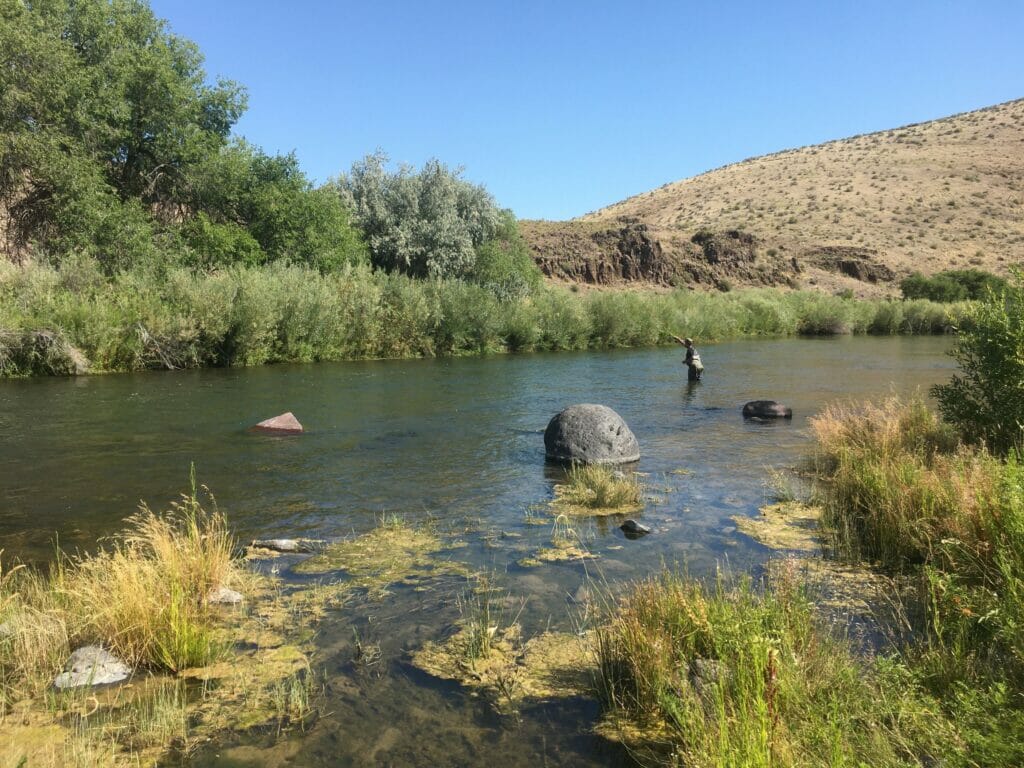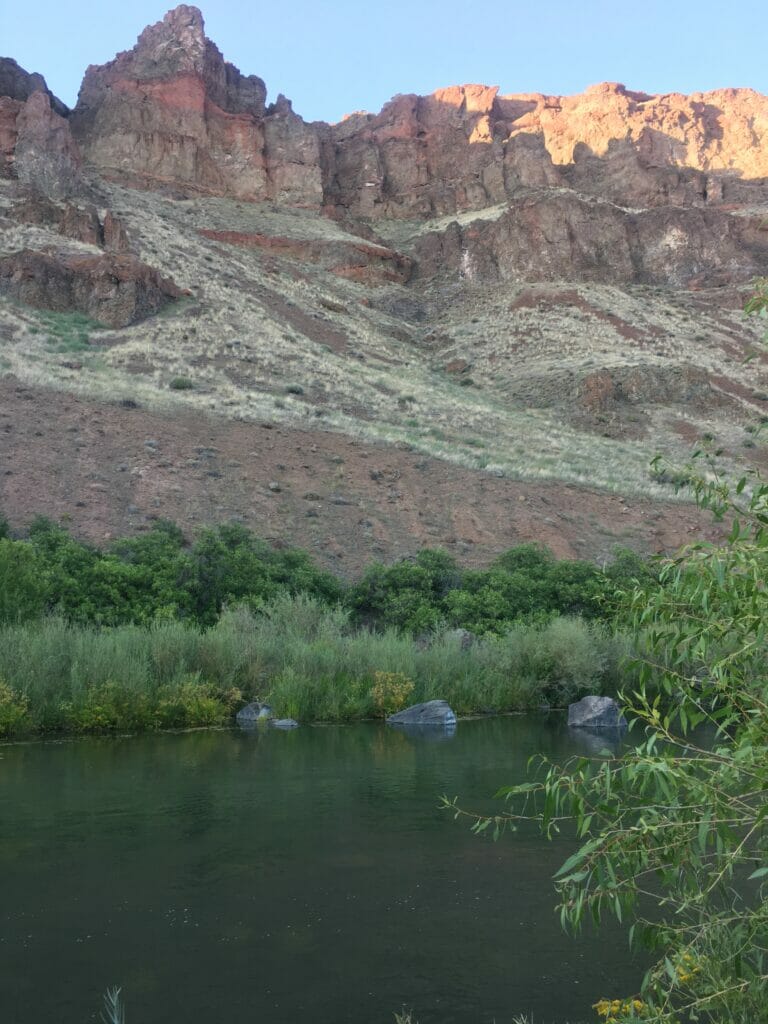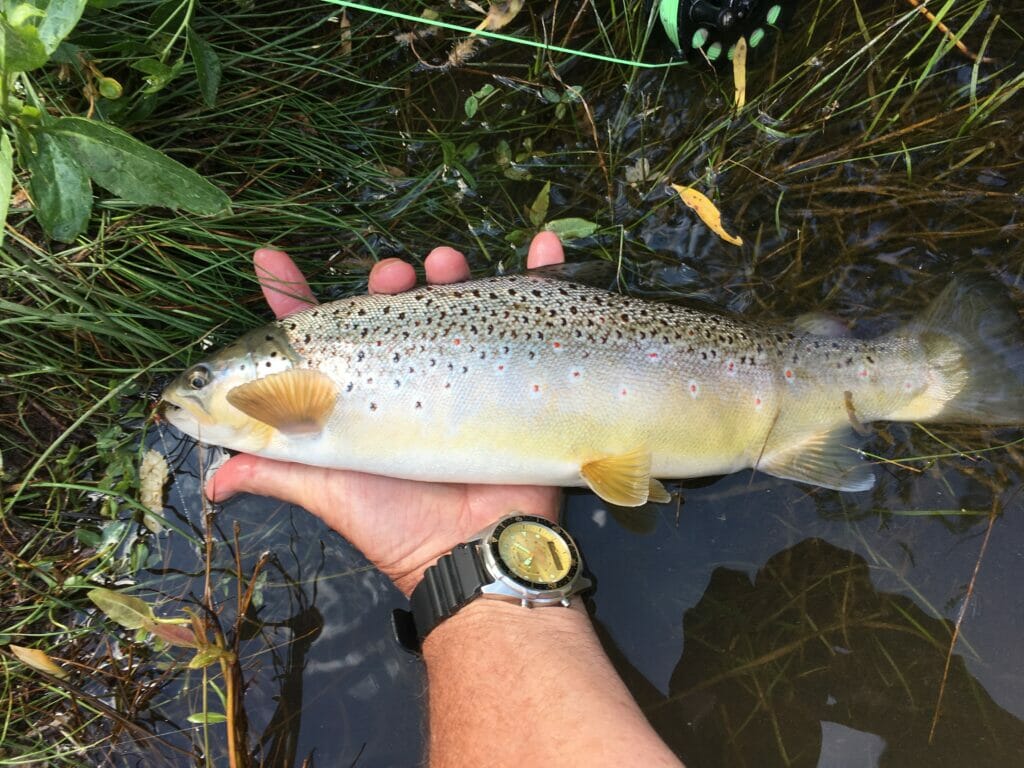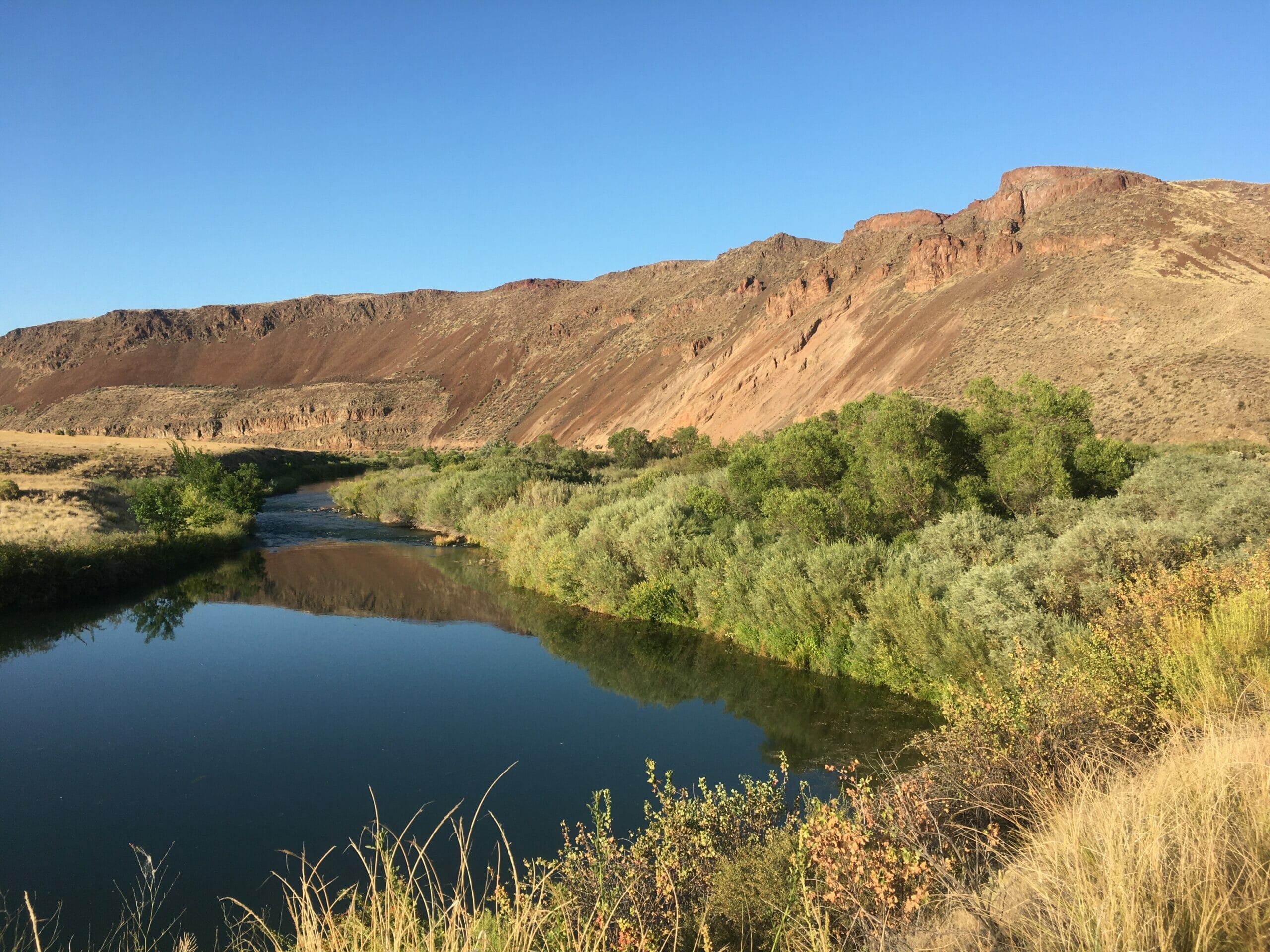TU is leading a coalition of sportsmen to permanently protect the Owyhee Canyonlands
The thing that strikes me most about the Owyhee River is the incongruity. This amazing trout stream springs from, and flows for many miles through, a desert.
Okay, most of this country is technically sagebrush steppe. But it’s dry, hot and largely treeless—a desert by most measures.
In the prime fishing season—mid to late summer and fall—it may well be 100 degrees in the shade while you are fishing the lower river. And the water will be so cold there that wet wading will cause your knees to ache and your calves and feet to forget altogether their proper function.
Meanwhile, monstrous brown trout go airborne to take down flying insects so small you need a scanning electron microscope to figure out what they are.
I observed all of this recently, on a quick visit to the lower river canyon. You can fish much of the river, but the five miles of tailwater below Owyhee Dam—completed in 1932 to deliver irrigation water and modified later to generate electricity—is now one of the most heralded and accessible trout streams in the West.

I was there to meet Kyle Smith and his crew. Kyle is TU’s Oregon field coordinator, whose work encompasses all points of the TU mission compass. He’s a core member of the team supporting TU’s Wild Steelhead Initiative, and TU’s lead on legislative and policy initiatives that aim to better protect areas of intact habitat and coldwater headwaters on public lands.
Kyle is a throwback as a sportsman, the type who does it all and makes everything look easy: casting, wading tough water, finding and landing steelhead, and bagging deer, turkey and especially chukar in their seasons. And he’s in his element on the Owyhee.
But that morning, Kyle was multi-tasking. Kyle is TU’s lead in a sportsmen-driven campaign to permanently protect habitat and sporting opportunity in the Canyonlands and when I caught up to him he was in front of a camera, working with a videographer to document some of the outstanding recreational values of the Owyhee Canyonlands region.
TU, through Kyle, is leading a coalition of sportsmen’s groups, including TRCP, BHA, Oregon Hunters Association, the Oregon Chapter of the Foundation for North American Wild Sheep. and others to enact legislation that better conserves fish and wildlife habitat, sustains recreational access, and supports science-based adaptive management of the Owyhee country. A more adaptive management approach here would help ensure that efficient ranching remains a conservation tool and that resource managers can respond appropriately in real time to threats to the remarkable ecology of this region.

The Owyhee Canyonlands represent one of the largest remaining expanses of intact, high-quality sagebrush steppe habitat in the West. Remote and with few roads, this region’s complex geologic history has fashioned a unique landscape with many soil types and microhabitats. Redband trout and other fish dwell in the upper Owyhee River, while elk, mule deer, pronghorn antelope and the one of the largest herds of California bighorn sheep in the nation reside in the rugged terrain around it.
The Owyhee Canyonlands has been identified by the U.S. Fish and Wildlife Service as one of six key strongholds for the greater sage-grouse in the West, while the Bureau of Land Management has recognized over 1 million acres of the Owyhee Canyonlands as meriting wilderness designation.
(Fun fact: salmon used to inhabit what is now the state of Nevada, and the Owyhee is a major reason why. The Owyhee is a major tributary to the lower Snake River , and before the construction of Owyhee Dam, 30-lb chinook salmon swam up the Owyhee to spawn in tiny tributaries winding through the sagebrush, including the river’s south fork. See the paper below, authored by TU’s former science director Jack Williams, for a fascinating analysis of this natural history.)
The evening before I met Kyle, I pulled into one of the many primitive staging and camping areas in the lower Owyhee canyon about an hour before dark. I quickly rigged up and wandered about 20 steps to where the stream purled around boulders into a long, delicious run. The surface dimpled here and there with noses. Every few minutes a heavy splash revealed a large, active trout.
I tied on a sprout and started casting.
The trout largely ignored my offering in favor of bugs I couldn’t see (I later found one, a trico mayfly, flexing its tiny thorax on my sleeve). I did get a few takes and slashes, and landed a couple of small brown trout that punched well above their weight class.

But mostly I just watched, while dusk settled onto the water, as the surface erupted with feeding trout. Multiple times, gold-flanked browns at least two feet in length blasted out of the water in the run below me. I cast wildly at anything and everything, while my lower legs began to emulate two waterlogged stumps.
At length I staggered up the bank and back to the car. A dinner of cheese and crackers and a doze in the dirt awaited me. And the night sky, so opulent in this area far from major urban areas, blazed overhead and bade me welcome to the river named after three native Hawaiian fur trappers, who disappeared there in 1819.
There aren’t that many places left in the Lower 48 where you really can get off the radar, if only for a few hours of fishing or a long day of chasing chukar. The Owyhee Canyonlands is one such place. We should keep it that way.
For more information on Sportsmen for the Owyhee Canyonlands, and to learn how you can support this campaign, go to www.owyheesportsmen.org.



